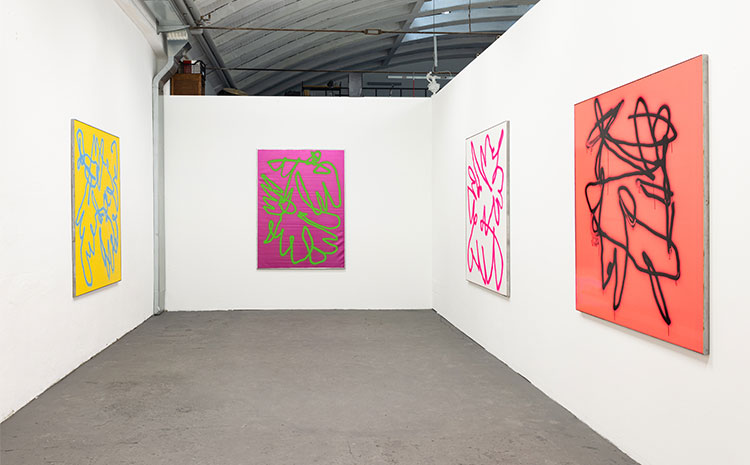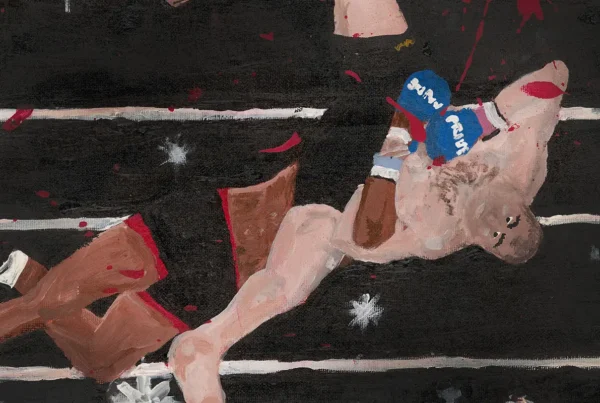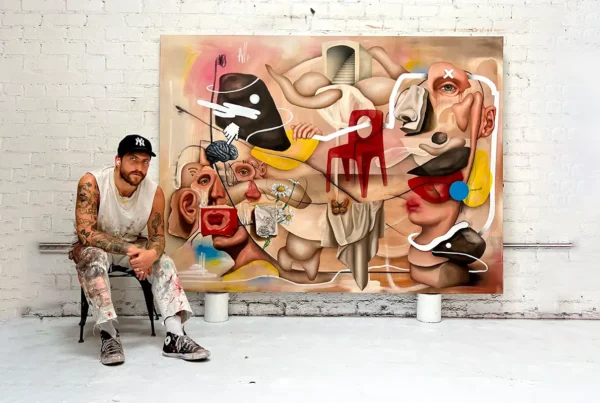“I could not define my style but it certainly has to do with abstraction even if I do not abstract anything.”
A Childhood Steeped in Art: The Beginnings of a Passion
Hailing from a quaint provincial town nestled at the foot of the mountains in Piedmont, Giulio Zanet’s upbringing was steeped in artistic influences. His childhood home was filled with creative expression as his mother played the piano and his father pursued painting. Over time, however, their artistic pursuits waned, potentially due to the demands of raising a family or the pressures of daily life.
During his teenage years, Zanet initially gravitated toward music as a means of self-expression. He attempted to learn the guitar and played with friends, but eventually came to the realization that music was not his destined path. Subsequently, he turned to the written word, dabbling in storytelling with aspirations of becoming a writer. Despite his efforts, Zanet soon discovered that writing, too, did not truly resonate with him.
It was with the discovery of painting that Zanet’s enduring passion was ignited. He found immense enjoyment in this art form and continued to hone his craft. After completing high school, he enrolled in the Academy of Fine Arts and relocated to Milan, immersing himself in the vibrant art scene. As he participated in exhibitions, artist residencies, and forged connections with fellow artists, Zanet became increasingly certain that painting was not only his passion but also his life’s calling. Despite the numerous challenges he has faced, Giulio Zanet remains steadfast in his commitment to his art.

The Transformation of Style: From Figuration to Abstraction
Giulio Zanet embarked on his artistic journey by initially focusing on figuration, immersing himself in the study of classical art and anatomy. Following his time at the academy, Zanet engaged in figurative painting, which gradually evolved as his focus shifted towards landscape and architecture. Intrigued by spaces with multiple perspectives and intersecting planes, Zanet sought to create visual and narrative short circuits.
Over time, Zanet’s artistic vision transformed, and his compositions became increasingly flat, with the painting itself taking center stage in every respect. Rather than striving for representation, Zanet embraced an individualistic approach towards minimalism, concentrating primarily on the essential elements of shape, color, and surface.
In addition to the evolution of Zanet’s artistic style, the materials he employs have also undergone a significant transformation. While initially utilizing canvas and oil paints, the artist now experiments with a diverse array of materials, including canvas, paper, PVC, and fabric, employing enamels, acrylics, and spray paints as his mediums of choice.
Presently, Zanet’s creative output primarily consists of paintings, although he also enjoys exploring spatial relationships through installations. Regardless of the medium, painting remains the unequivocal focal point of his work. Zanet’s abstract creations are characterized by their vivid colors and the coexistence of flat backgrounds, irregular geometries, spontaneous gestures, and precise, deliberate markings. These elements often engage in a dynamic interplay, creating intriguing dichotomies that strive towards an unstable equilibrium.
Zanet’s artwork consistently incorporates a playful aspect, emphasizing the duality of both comic and tragic elements that reflect the complexity of the human experience.
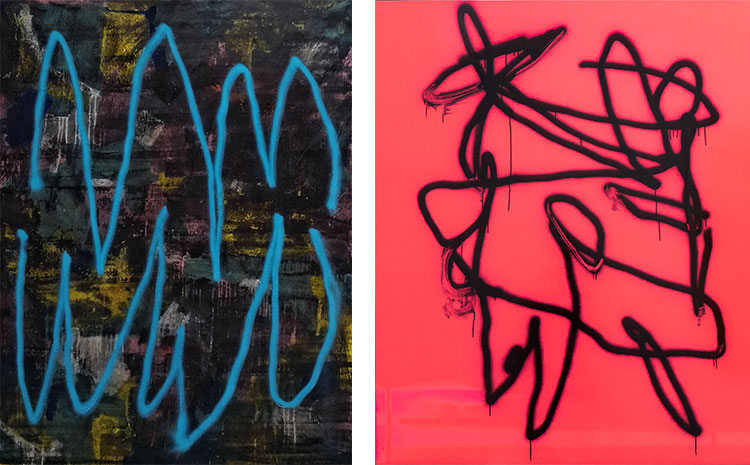
Chaos, Order, and the Creative Process: Giulio Zanet Artistic Approach
Giulio Zanet’s creative process begins with the careful selection of the base material, which may include paper, canvas, PVC, or various fabrics. Color is then applied to the chosen surface in an instinctive and seemingly random manner, without a predetermined image in mind. The artist employs a diverse range of mediums, such as enamels, acrylics, wall paint, and spray paint.
Following this initial chaotic stage, Zanet strategically endeavors to instill order within the composition. This often entails the removal of certain elements, a practice the artist deems essential to his work. Embracing error and failure, Zanet acknowledges an inherent awareness of defeat that resonates with the human experience.
Zanet’s artwork primarily focuses on painting, with particular emphasis on the surface and color. While it may be challenging to categorize his style, it undeniably possesses elements of abstraction, albeit without direct abstraction of any subject matter. The artist expresses a keen interest in the experiential aspects of painting, exploring its creation and the ensuing enjoyment it provides.
Of Zanet’s various exhibitions, “Ecolalia” stands out as a significant project that demanded considerable attention. For the first time, Zanet concentrated on a “cycle” of works consisting of only five pieces, each demonstrating the unique outcomes produced through repetitive gestures. During this exhibition, he isolated the gesture by removing the pictorial surface that typically served as the background, opting instead for monochromatic vinyl fabrics. This innovative approach further showcased the diverse and evolving nature of Zanet’s artistic practice.
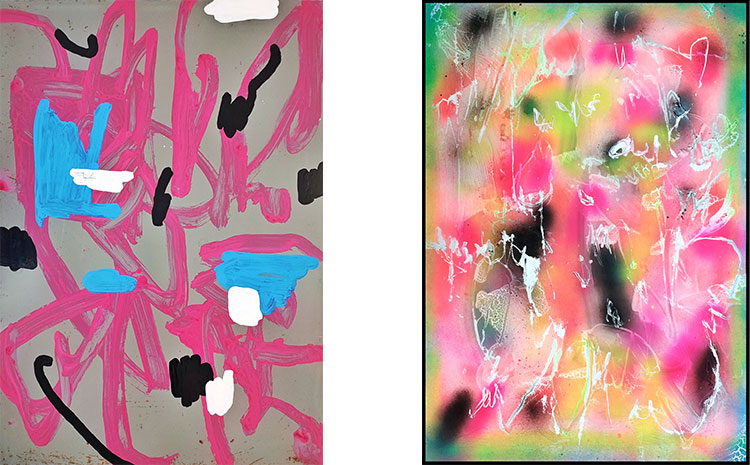
Inspiration, Ambition, and the Artist’s Studio: The World of Giulio Zanet
Giulio Zanet’s artistic inspiration is derived from every aspect of his existence: the experiences he lives, the sights he beholds, and the literature he consumes. Life itself serves as the ultimate muse for his paintings. Zanet continually contemplates the significance of his work, and perhaps it is the very ambiguity of this meaning that compels him to continue creating. For the artist, the process of painting holds great importance, as each piece evolves organically without a predetermined plan or project.
Zanet’s studio is the quintessential environment for his artistic endeavors, as it offers solitude and minimal distractions. The artist devotes considerable time to observing his work in progress, allowing the act of creation to guide his hand. Beyond the confines of his studio, engaging in conversations with fellow artists and trusted individuals plays a crucial role in his artistic development.
For years, Zanet has harbored a dream of transforming his artworks into carpets. Although the opportunity has yet to materialize, he remains optimistic that his vision will eventually come to fruition. When asked if art assists him in other facets of life, Zanet asserts that it does. He believes that painting offers a unique lens through which to explore the world, and that refining one’s creative gaze allows for a deeper understanding of the world around us. This insight, he suggests, holds true for both creators and appreciators of art.
